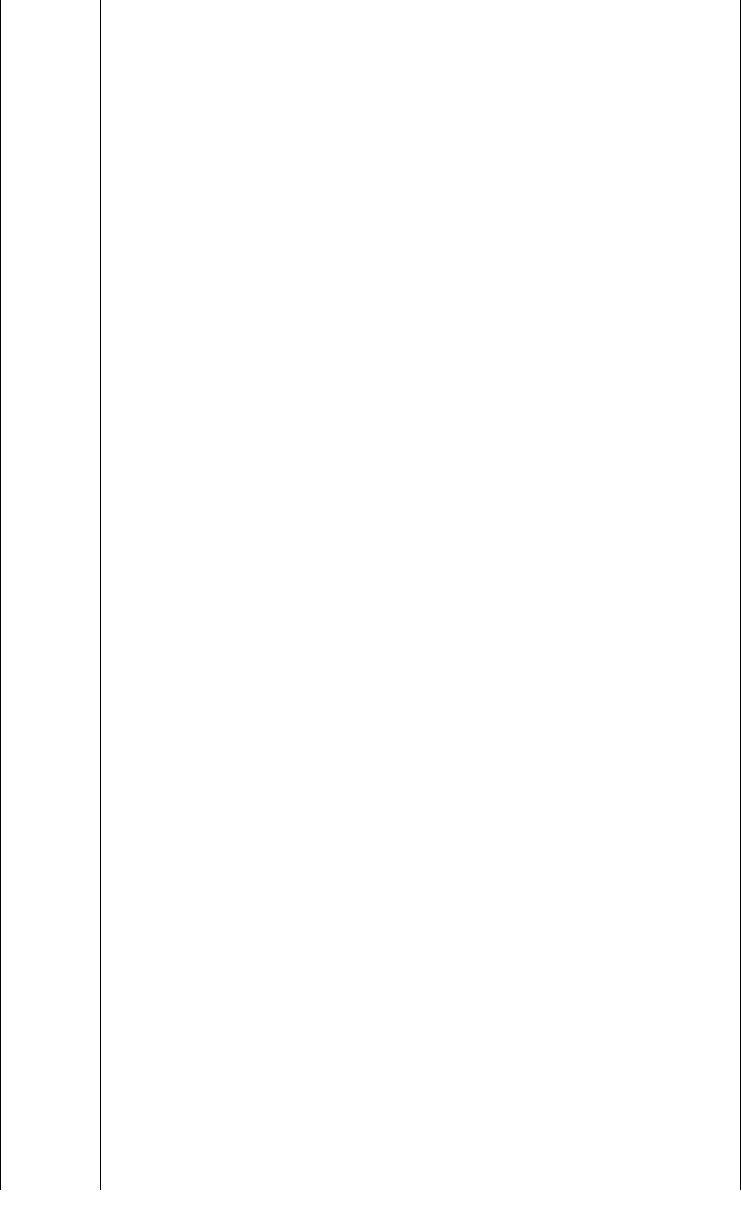Kutz M. Handbook of materials selection
Подождите немного. Документ загружается.


1352 USING COMPOSITES
Table 2 Properties of Commonly Used Structural Fibers
Fiber Type
Tensile Strength
(ksi)
Tensile Modulus
(Msi) Density (gm / cm
3
)
Type E-glass (electrical and structural
applications)
500 10.5 2.54
Type S-glass (highest mechanical
properties)
650 12.4 2.49
Aramid (Kevlar 49) 550 19 1.45
High-strength graphite, aerospace type
(AS-4 or T-300 type)
570 32 1.79
Intermediate modulus graphite, aero-
space type (IM-6)
740 40 1.76
Commercial graphite (Panex 33) 550 33 1.81
fibers contains a waxy, semisolid resin and two powders. The powders are stirred
into the molten resin to produce a consistent mix under controlled conditions.
Subsequently, the fibers are forced into a sheet of molten resin to form the
prepreg. Such a product could never be made on the shop floor.
Weight and load issues are intertwined because the fiber type and fiber form
determine how much material is needed to carry loads. Strength-density com-
parisons for fiber tyes are shown in Table 2.
Fiber form (configuration) has a significant impact on the mechanical prop-
erties of the laminate. Although generalizations are risky, some basic rules are:
●
Loads are carried by the fiber while the resin transfers load from fiber to
fiber.
●
Continuous fibers in the load path yield higher properties than short fibers.
●
Unidirectional tapes yield higher properties than fabrics do because fabrics
have fibers in the off-axes, which may not be needed to carry load.
●
Highly loaded, structurally efficient parts have fibers in four directions:
●
longitudinal—main load path
●
90⬚ transverse—secondary load path
●
25⬚–45⬚ off-axis plies in pairs (Ⳳ)—carry shear
●
To control warpage, the lay-up should be symmetrical about a centerline.
●
Fibers best carry in-plane loads when flat, so thin fabrics produce higher
properties than thick fabrics, due to less fiber waviness or kinking during
weaving.
●
Thin tapes and fabrics can be accurately matched to the load requirements
to produce a lighter but more expensive structure.
●
Commercial fibers have fiber bundles 4–16 times as large as the corre-
sponding aerospace grades, so these fibers are preferred for tape and
chopped fiber applications where optimum weight is not required.
●
Plied laminates have the lowest properties in the thickness direction.
To improve the impact resistance of panels and the joint between the skin
and flanges of co-cured stiffeners, an increase in the normal tension strength is

6 SELECTION OF MATERIAL AND MANUFACTURING CONCEPT 1353
Table 3 Typical Properties of Composites Produced by Different Methods
Process Material Construction
Tensile
Strength
(ksi)
Modulus
(psi ⫻ 100,000)
Density
(lb/ in.
3
)
Chpped fiber spray 30 –50% glass / polyester 9–18 8–18 0.6
Compression mold SMC 25% glass / polyester
SMC 50% glass / polyester
50% glass mat / polyester
8–12
24–30
25–30
10
12
9–20
0.76
0.65
0.66
Filament winding 40% glass /epoxy 80–150 40–90 0.1
Pultrusion 40–80% glass roving/ epoxy 60–150 40–60 0.1
35–50% glass mat / polyester 12–30 10–25 0.8
Autoclave molding
prepregs
7781 glass fabric/ epoxy 68 34 0.1
Commercial unidirectional
graphite/ epoxy
145 100 0.063
Intermediate modulus unidi-
rectional graphite / epoxy
(50% in load path)
180 120 0.063
Graphite fabric /epoxy 60 70–100 0.063
Note: Data for Comparison Only—Not to be Used in Design
required. Since stitching the uncured plies puts fibers in the z direction, a me-
chanical engineer was sent to a sewing machine shop in Manhattan’s garment
district. He found a deep throat, manually controlled machine formerly used to
make shoes and handbags. Kevlar thread with a breaking strength of 150 lb was
used to stitch the prepreg prior to cure. In the skin to stiffener flange joints, a
stitch was found to be structurally equivalent to a fastener, but much cheaper to
install. The development of the resin injection process permits the use of sewn
dry fabric, and three-dimensional (3D) woven or braided preforms to produce
composites with excellent normal tension properties.
Woven truss core has been incorporated into the walls of large radomes to
carry heated air for deicing. Braided structures are integrated assemblies having
one or more fiber types intertwined in a 3D configuration. Complex shapes such
as sections of an automobile chassis have been produced and have met structural
requirements.
The mechanical properties of laminates using various fiber/resin combina-
tions are given in Table 3. The table is intended to illustrate the factors affecting
laminate strength and stiffness discussed previously.
However, one additional factor must be considered in selecting design con-
cepts: the panel stiffness requirement, which can be met by using either a solid
composite panel or a sandwich structure.
The design and fabrication of composite sandwich panels, with plywood,
balsawood, various types of rigid foam or honeycomb cores, is well established.
Walls of large truck trailers, made of panels having core and fiberglass plywood
skins, have excellent resistance to both corrosion and puncturing. Sandwich pan-
els are widely used in marine and aerospace applications to save weight of panels
requiring high stiffness.
Having selected potential materials and configurations, several manufacturing
issues must be considered. The first is production rate. Supporting the building

1354 USING COMPOSITES
Table 4 Process Sequence Flow Times
Operation Time (min)
Pultrude one foot of channel 0.1
Injection mold a small part 0.2
Hot stamp/trim part from TP sheet 0.75
Press mold using rapoid curing polyester
SMC
2.0
Filament wind 1# on mandrel 0.1–2.0
Spray chopped fiber/resin to form a bathtub 10.0
Lay-up a small part with fabric prepreg 30.0
Autoclave cure a large panel 540
Hydroclave cure a large rocket nozzle 4800
of 20 Boeing 737s per month requires a different mind set than producing 30,000
identical parts per month for a popular sedan. The times to complete processes
are in Table 4. Data for several fiber-reinforced thermoplastics are included.
Their high output rates are widely accepted in automobile design. In contrast,
thermosets are limited in high-production applications to press molding of sheet
molding or bulk molding compounds because their process times are as short
as 2 min.
A second issue, facilities, is very complex. If the facilities, personnel, and
experience are available, the project probably will proceed smoothly. Often,
equipment, floor space, and utilities must be acquired for a new program at an
estimated capital expenditure that is relatively easy to define. The difficulty is
in evaluating the benefit to the company. Intangibles include the cost of entering
a new business, anticipated profit from the specific operation, stabilizing em-
ployment, and possibly using available space. Even the most realistic evaluation
is meaningless in times of corporate austerity, or if management is in an expan-
sionist mood and willing to accept risk.
Another option is to buy a complex part with many spec requirements from
a specialist who has the expertise, an available facility, and a good track record.
In the boom times of the 1970s, a every large aerospace company had a com-
posites shop. Even so, all the precision nose radomes, except for one type, were
made in Marion, Virginia, because the supplier there was extremely capable and
efficient. However, not all vendors are as competent as this one, a factor that
must be included in make or buy decisions.
Table 5 is an overview of composite manufacturing processes. Except for
pultrusion, all other processes have a common limitation on part shape: Simply
stated, the part must be easily removable from the mold. While it is possible to
use segmented (breakaway) tooling, the combination of assembly, disassembly,
extra cleaning after use, and higher tool repair costs, constitutes an undesirable
cost center. Many parts are made on washout or frangible cast plaster mandrels,
simply because the part geometry prevents removal of any other type of tooling.
For limited production of a complex shape, a composite costs less than its metal
equivalent because the higher cost of the metal forming tools cannot be amor-
tized over enough units. Also, the metal part must be an assembly of individually
made components while the composite part can be molded as an assembly.

1355
Table 5 Design Limitations Imposed by Manufacturing Processes
Process/ Material Cure Method
Inherent Restrictions on Design
(Not including equipment
limitations or special tooling
concepts needed to remove
parts from mold) Comments
A. Spray chopped fiber/ resin mix on mold
(may be supplemented by laid-up mat)
Ambient temperature cure or
press molding
● Low properties ● Good for complex shapes
● Low equipment / material cost
B. Hand lay-up of fiber resin combinations
on mold (mat, woven yarns and rovings, un-
itapes, wet resin, or prepregs)
All (determined by resin type)
● Ergometrics
● Elapsed time before resin be-
comes unworkable
● Labor intensive, but some automation is available
C. Sheet or bulk molding compound (SMC /
BMC)
Press molding
● Low properties ● Good for complex shapes and high production rates
● Material costs can be low
D. Resin injection into closed mold or vac-
uum bag containing reinforcement
Ambient temperature or oven
or press cure
● Resin flow limits part size
● Molds must be clamped shut
to resist injection pressure
● Good for complex shapes
● Some resins cure quickly
● Compatible with advanced dry fiber preforms such
as braided or sewn assemblies that optimize fiber
placement in load paths
E. Filament winding of resin impregnated
bands of fibers (may be supplemented by
local fabric patches)
Ambient temperature or overn
cure
● Limited to surface of revolu-
tion shapes
● High throughput
● On-site production of lare structures possible
● Moderate startup costs
● Prepregs yield better properties
F. Pultrusion (mat, fabrics, braided pre-
forms)
RF or heat cure in a continu-
ous process
● Limited to constant cross
sections
● Design restrictions define
configuration/ wall thickness
● High output
● Moderate capital requirements
● Braided stock raises properties
G. Automated lay-up of carbon fiber tape /
fabric
Autoclave cure
● Tape layers limited to gentle
contours
● Fiber placement systems for
complex contours
● N/ C programs are complex
● Small plies not produced efficiently
● High material utilization of tape
● High capital costs
● N/ C programs critical to cost
● Automated ply cutting and
laser projectors to guide ply
placement by hand
● Applicable to both tape and fabric
● High output for moderate capital costs
● N/ C programs control material cost

1356 USING COMPOSITES
Part removal is also facilitated by using a springback factor in right-angle
corners (tool 91.5
⬚ to get a 90⬚ corner). Other limits on part size are due to the
equipment used in the curing process. Heat curing is used for several purposes:
●
To rapidly cure the resin as in press molding of SMC (sheet molding
compound)/BMC (bulk molding compound) with 2-min cures.
●
To cure resins having service temperatures about 200⬚F, which are almost
totally unreactive at ambient temperature.
●
To produce low-void composites from dry materials through resin flow
into the microscopic gaps between fibers and the plies.
●
In these processes, the resin cure requires heating in an oven, press, or
autoclave (pressure vessel), which introduces limitations of size and ther-
mal capability.
The last process variable is curing pressure, which is used to densify the
laminate by suppressing porosity. Techniques for applying pressure include:
●
Contact molding—apply paint or rubber roller to wet lay-up to roll out
some of the entrapped air.
●
Wrap with shrink tape to apply pressure during oven cure.
●
Vacuum bag molding—seal the part with a plastic film and evacuate to
13–15 psi; cure at ambient temperature or in an oven.
●
Autoclave molding—place the vacuum-bagged part in a heated pressure
vessel and pressurize with inert gas to 45–150 psi (high recurring and
facility costs).
●
Hydroclave molding—place the vacuum-bagged part in a pressure vessel
filled with water. The pressure is developed by thermal expansion (high
recurring and facility costs); 250–500 psi.
●
Press molding (rapid part production possible; 50–1000 psi.
The last factor in choosing materials and processes is market value, or the
perception of what a product is worth. This varies with application. In the highly
competitive automobile industry, large volume demands the lowest price possi-
ble, and there are few large structural composite applications in production due
to cost. The cabs of large trucks, made at the rate of 60,000 per year, trade
tooling cost against labor cost, which benefits composites. In contrast, luxury
items such as the Corvette, premium tennis rackets, and composite kit airplanes,
have a cachet that increases the sales price. As an extreme, high-performance
race cars and America’s Cup yachts can command a hefty premium over similar
products made from conventional materials. Price competition in all areas of the
aerospace industry has forced price reductions obtained through production ef-
ficiencies, which reduced scrap and rework, and produced cheaper materials that
are easier to use.
7 DETAIL DESIGN
An obvious design requirement is that parts must be easily removable from
tooling without damage. Design details to be avoided include (1) reverse flanges,

7 DETAIL DESIGN 1357
which require segmented tooling; (2) molded-in stiffness perpendicular to the
direction that a part is removed from a mold, except on the bottom of a box;
(3) lack of an adequate taper (draft); and (4) surface buildups, which tend to
‘‘hang up’’ on a mold during part removal.
These principles are illustrated by a press-molded junction box used with
buried telephone lines. Flanges to which the access door is attached project
beyond the box. The box is molded with the flanges up, so the stiffeners on the
opposite face are half-rounds. They are configured to be horizontal to provide
maximum support to the vertically positioned terminal strips inside the box. The
stiffeners on the remaining four faces of the box are blade configuration, tapering
in both width and height away from the flange. The design is tailored to simplify
removing the part from the tool. The part is molded in 2 min, then is popped
out of the tool quickly.
Five of the eight fabrication schemes involve lay-up of plies on mold, re-
gardless of how the part is cured. In many cases, this operation represents the
majority of labor costs. To become more efficient, both the number of plies and
the design of individual plies must be optimized. First, the number of plies must
be reduced, if possible, by using thicker materials, if they are available. A side
issue is weight penalty. In aircraft fiberglass parts, net sections are usually less
than 0.1 in. thick, and often are 0.05 inch thick, especially in sandwich construc-
tion. For these applications, the preferred dry glass fabric is style 181, which
weighs 8.9 oz per yd
2
and yields a composite thickness of 0.01 in. Boat hulls,
chemical storage tanks, and swimming pools require thicker laminates and are
less weight critical. So woven roving fabrics ranging up to 52 oz per yd
2
, with
a ply thickness of 0.05 in., are used for these applications. The weight of
chopped fiber mat varies from 0.75 to 3.0 oz per yd
2
. In addition to reduced
labor cost, thicker materials cost less per pound because throughput is increased
at the material supplier’s facility.
A second issue involves tailoring plies to simple shapes, which can be nested
in a cutting pattern, which reduces materials usage. Often, edge plies are used
at the edge of panels for bearing strength. They should be cut as strips. For
high-rate production, automated ply generation should be considered. Die cutting
is applicable for repetitive shapes. In plants producing large numbers of com-
posite parts repetitively, N/C cutting machines are used to cut and identify the
plies or ply segments. Then the plies are kitted and sent to the lay-up floor.
These N/C ply cutters come from the garment industry. A roll of material up
to 60
ⴖ wide is unrolled on a 20⬘ long table. A computer controlled cutter cuts
out individual plies of any shape. A second head uses ink to identify each piece.
The trick is to locate the pieces close together to avoid wasting material.
A good method to reduce the number of plies is to convert from a monolithic
panel to sandwich construction. Several low-cost methods are available.
Flat panels can be laid up and cured in a multicavity press. A widely used
system for movable interior partitions used fiberboard skins, paper honeycomb,
and film adhesive that cured rapidly. The boat building industry is licensing the
patented SCRIMP process developed by Seaman Composites. The process has
been used to make individual flat sandwich panels 18 ft
⫻ 40 ft, which are
sequentially co-cured into a multisided assembly. The skins are polyester-
impregnated rovings, and the core is foam slabs prespliced with room temper-
ature curing adhesive. The resin is injected into both skins while the assembly

1358 USING COMPOSITES
is vacuum bagged. The resin is pressurized in conventional paint spray pots and
is uniformly distributed within the lay-up by a proprietary method. The panels
have withstood extensive testing with excellent results. The process is attractive
because structural panels of any configuration are produced at low material and
labor costs with minimal facility requirements.
A third way to produce sandwich panels is co-curing in an autoclave. The
core is cut to size, sometimes preformed to the appropriate shape, tapered at the
edges if needed. The core is laid over the adhesive and a toolside skin and is
itself covered with a second adhesive ply before upper (inner) skin is laid up, a
vacuum bag is installed, and the lay-up is cured under positive pressure. For
helicopters operating at temperatures below 180
⬚F, the core is a polyamide foam
and the panel cure is 1 h at 225
⬚F at 45 psi. The secret of the process is that
the skin lay-up, adhesive, and core deform sufficiently under the applied load to
fit snugly together to form structural bond lines. Sandwich panels requiring
higher loads and service temperatures are produced using nonmetallic honey-
comb cores. Precautions must be taken, however, in the tool design and part
setup to prevent core crushing from curing loads applied to the edges of the
core. These three approaches to sandwich construction all have some provision
for localized patch plies, so tapered skins are feasible. In most cases, the core
does not have to be processed to accept the extra plies, which provides a sig-
nificant cost reduction.
The vast majority of composite parts require trimming because they are made
oversize intentionally. Generally, it is very difficult to lay up and cure a large
part without edge flaws. Unfortunately, composites are very abrasive and soon
wear out the high-speed steel/carbide cutters used in aluminum fabrication. The
least expensive method of cutting is with a fluid-cooled diamond grit blade. So
the preferred part designs have edges that are straight. Cutouts in panels should
be minimized, but they can be routed using special design cutters operating at
a specific range of revolutions per minute. Initially, cutouts were net molded
using tooling to cut the prepreg plies accurately, then the hole was net molded
to design configuration during cure. However, improvements in trimming pro-
cesses have made net molding less attractive.
Waterjet systems used for trimming develop a narrow, focused beam of water
at pressures up to 60,000 psi. The water jet travels up to 2800 ft per minute.
The high energy of the water jet produces localized failure of the composite to
yield a clear-cut edge. The cutting efficiency of the water jet can be improved
by incorporating powdered garnet into the stream. Both systems have no restric-
tions on shape, and may be either manually or computer controlled. Computer-
controlled routers are also available that trim panels of any shape efficiently.
Both methods are suited to high-rate production. So there are three approaches
to trimming, but there is a cost in departing from sawing straight cuts.
Many composite parts go into assemblies such as hulls or decks, bridge repair
panels, or major aircraft sections. The two primary methods of joining separate
parts are mechanical fastening and structural bonding. The selection of assembly
method is limited by the cohesive strength of the available adhesives. At load
intensities above the capabilities of the adhesive, fastening is mandatory. Con-
versely, lightly loaded joints should be bonded due to the complexities of fas-
tening.

7 DETAIL DESIGN 1359
Mechanical fastening of composites is more difficult than riveting or bolting
metallic structures for several reasons. In addition, there are more problems
fastening weight-critical graphite/epoxy structures than fiberglass or Kevlar as-
semblies. In fact, structural analysis and manufacturing techniques for highly
stressed bolted joints were the last major design and manufacturing areas to be
fully understood and implemented in production.
As stated previously, composites are very abrasive, so carbide drills are used
extensively with special point/flute configurations, often in conjunction with
motors that advance the drill a precise amount into the workpiece for each
revolution. Even so, many automated drilling systems automatically change drills
as often as after preparing only 40 holes. Drilling can produce structural damage
around the holes, which can affect structural integrity. This damage includes
extensive delamination of the ply where the drill exits the workpiece, localized
delamination around the hole, and fiber shredding of the aramid fibers in the
hole region.
Hole preparation requires a gentle touch. To further increase the difficulty,
many fasteners require a precision sized hole such as 0.188 in. pin requiring a
0.189 to 0.191-in. diameter hole. The countersinks for the fastener heads must
be tightly controlled to obtain a good fit so the heads can bear uniformly against
the composite.
Fastener selection is a design issue. For fiberglass and Kevlar structures, con-
ventional design fasteners may be used. Stainless steel fasteners are required for
wet or corrosive environments.
A whole new family of fasteners is required for graphite/epoxy structures for
several reasons. First, the composite is so cathodic that only titanium fasteners
are corrosion resistant. A-286 fasteners pit, and monel generates heavy corrosion
products that do not appear to reduce joint strength. Also, because carbon fiber
composites are more sensitive to high bearing loads than metals, fastener heads,
nuts, and washers should be enlarged to provide as much bearing surface as
possible to prevent pullout. The larger area also spreads out the high clamping
(preload) force desired for good strength and life, so that the laminate is not
damaged by matrix crushing. Fastener edge distance and spacing have been
studied extensively; 3D (D
⫽ fastener diameter) edge distance and 5D spacing
are used widely. Many fasteners are installed with wet sealant as a corrosion
preventative. Note of caution: The design of highly loaded joints and the selec-
tion of fasteners requires specialized knowledge. Fastener hole preparation and
installation also require specific knowledge and preparation of detailed and un-
derstandable instructions for mechanics.
The last major problem with assembly of composites is their lack of ductility.
Metallic structures can be clamped together to produce an acceptable fit. In one
case, an aircraft’s wing covers were machined in the flat and forced to fit the
curved substructure by hydraulic clamps. Such a procedure is guaranteed to
cause severe structural damage to composites by internal delamination. Thus,
mating composite parts must be made to fit by shimming with precured com-
posite shims and paste epoxy adhesive that cures at ambient. In lightly loaded
joints, the shim adhesive can be reasonably thick if the composite members are
overdesigned, so that bearing failure will not occur. In highly loaded joints, the
shim thickness is reduced because of bolt flexibility. In graphite/epoxy overlap

1360 USING COMPOSITES
specimens pulled in tension, the joint strength was reduced 40% when the shim
thickness was increased to 0.06 in. from 0.03 in. The 0.125-in. titanium bolts
were kinked locally because the shim could not resist the applied load as well
as the composite could.
As a result, the aerospace industry has agreed on the following procedure for
resolving gaps in bolted joints:
Gap Procedure
0–0.005 in. Do nothing
0.005–0.03 in. Use liquid shim
Greater than 0.03 in. Use solid shim to reduce gap to less
than 0.03 in.; then use liquid shim
Good design practice for composite assemblies involves controlling the faying
(mating) surfaces by tooling. The substructure of a torque box assembly is usu-
ally tooled to control the chordal height of the spar and ribs. If the cover tooling
reproduces the substructure contour, the cover will fit reasonably well. The cover
thickness variations are thus reflected away from the joint to simply fit up. The
mechanical assembly of a complex graphite/epoxy structure is a challenging,
difficult, and expensive operation. However, through the design, manufacturing,
and quality control interface, it can be made manageable. Also, as the assembly
is understood, adjustments and refinements to the design and manufacturing
process can be made to expedite production and reduce costs.
The bonding option presents two alternatives that manufacturing prefers to
mechanical assembly: (1) structural bonding of individual parts and (2) an in-
tegrally molded assembly produced by curing several lay-ups concurrently.
The manufacturing objective for structurally bonded assemblies is to produce
an acceptable unit with a minimum of effort with little rework or scrap. To
achieve these aims, the process must provide for:
●
Cleaning the mating surfaces to prepare them for bonding
●
Good fit up of mating surfaces to glue-line tolerances
●
Locating the parts in the proper orientation during adhesive cure
●
Using a thin fiberglass/nylon cloth (scrim) to guarantee a continuous bond
line
●
Obtaining a consistent bond-line thickness within specified limits.
The surfaces of individual parts are contaminated with mold release to prevent
them from sticking to the mold, dust from trimming, and fingerprints. Surfaces
can be prepared either by abrasion followed by a solvent wipe, or removal of a
sacrificial external peel ply. Peel ply is preferred for large areas and local areas
at the center of a large area. Highly stressed aircraft parts are usually made with
a peel ply to avoid damage to the fibers.
Part fit up to bond-line tolerances is mandatory for structural integrity and
fatigue resistance. The optimum process consists of a balanced lay-up to prevent
warpage and geometrically accurate tooling to control the contour of the faying

7 DETAIL DESIGN 1361
surfaces. However, these preferences cannot always be granted. Often, for cos-
metic purposes, the tool surfaces must be away from the joint, as in the case of
boat hulls. Consider the example of a very large ocean-going fiberglass/polyester
hull approximately 3.5 in. thick. Thickness variations could be almost
Ⳳ0.25
in. thick. Using surveyors’ techniques, shipyard workers measured the wall-to-
wall distance and laid out the trim line on the bulkhead 0.125 in. undersize. The
35
⫻ 30 ft bulkhead was lifted into the hull at the desired station and local
interferences sanded until the bulkhead was seated in the desired position. A
gusset was cured in place on one face of the bulkhead while it was supported.
After cure the scaffold was removed, and the gap between the hull and bulkhead
was filled with glass fabric and resin before the other gusset was laminated in
place. This is a large-scale example to explain the concept of sanding or patching
parts to obtain the proper glue line for the adhesive being used.
A factor in joint strength is width. Peak stresses occur at the edges and decline
toward the center. The average allowable stress decreases with length at a certain
point because added area contributes little load-carrying capability. While man-
ufacturing prefers narrow joints to ease the fit up problem, engineering also
benefits through weight reduction. More importantly, manufacturing prefers bond
lines that are in straight-line elements on flat planes. Bonding over bumps is
risky due to the high potential for improper bond-line thickness. Antipeel fas-
teners reduce bond-line stresses in highly stressed or complex-geometry bonded
joints.
Two categories of adhesives are used in composite structures:
●
Paste or liquid adhesives, typically mixed on the shop floor and cured at
ambient (bond-line thickness 0.002–0.02 in.)
●
Calendered film adhesives that are cut to size, placed in the joint, and
cured at elevated temperature under applied loading (bond-line thickness
0.001–0.01 in.)
The paste adhesive tolerates a thicker glue line with larger tolerances than
the film adhesive. Thus, if the analysis, and weight considerations, can tolerate
paste adhesives, they are preferred because parts can have larger tolerances in
the fit up.
In addition to maintaining an adequate bond line by satisfactory fit up, a thin
cloth is used to prevent adhesive squeezeout. Individual parts also must be po-
sitioned relative to each other as specified by the engineering drawing. Small
assemblies are bonded in a holding fixture. As assemblies become larger, fixtures
become more cumbersome. An alternative is to provide coordinating holes in
the design so parts can be pinned together during bonding. These holes can be
subsequently used for antipeel fasteners, installation of systems, or to make joints
fail-safe with structural fasteners.
Despite the precautions needed to assemble bonded structures, bonding is still
much easier for manufacturing than fastening.
The concept of co-cured structure is an attempt to eliminate the assembly
problems discussed previously. The idea is to place several lay ups on the mold
at once to produce a panel. The application to foam sandwich and honeycomb
